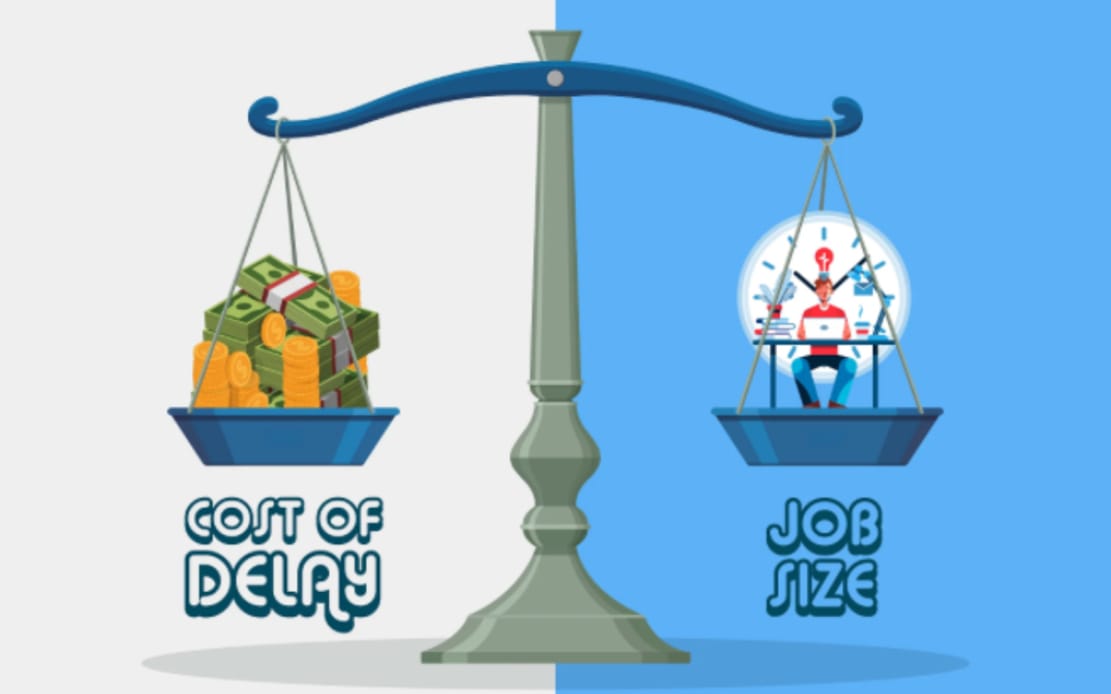WSJF: TIME IS MONEY, DON'T WASTE IT!

In software product management, decision-making regarding priorities can be complex. How do you decide which features to develop first? How can you maximize value for the user while minimizing costs and risks? The concept of Weighted Shortest Job First (WSJF) offers a structured method to prioritize work and answers these questions.
What is WSJF?
WSJF is a prioritization technique used in Agile methods, particularly in the context of the Scaled Agile Framework (SAFe). It is based on the principle of maximizing economic returns by prioritizing tasks that deliver the most value while requiring the least amount of time or effort to complete.
The WSJF formula is as follows:

- Cost of Delay (CoD): This refers to the lost value or missed opportunities if a feature or work item is not delivered quickly. It is typically evaluated based on three criteria: value to the user, risk reduction or cost avoidance, and the opportunity for differentiation or innovation.

- Job Size: This is an estimate of the effort, time, or resources required to complete a task or feature. The smaller the size, the higher the priority, as it can be delivered quickly.
By using WSJF, teams can identify items that provide the most value relative to the amount of effort required, helping them focus on the most important elements in the short term.
Using WSJF in Software Product Planning
Using WSJF in software product planning and management involves several steps:
- Identify Work Items:
Create a list of features, tasks, user stories, or bugs to address. Each item should be clearly defined and broken down into manageable units. - Estimate Cost of Delay (CoD):
For each item, evaluate the cost of delay by considering the value to the customer, the impact on risk and cost avoidance, and the opportunity for innovation or differentiation. This estimation is often done in collaboration with stakeholders to ensure all perspectives are considered. - Estimate Job Size:
Estimate the effort required to complete each item. This can be measured in complexity points, work hours, or any unit appropriate for the team. - Calculate WSJF:
Divide the Cost of Delay (CoD) by the job size to obtain the WSJF score for each item. Items with the highest WSJF should be prioritized. - Prioritize Items:
Organize items based on their WSJF score. The items with the highest WSJF should be addressed first, as they provide the best balance between value and effort. - Implementation and Re-evaluation:
Once items are prioritized, the team can begin working on them. It’s important to regularly re-evaluate the WSJF of items, especially if conditions change (such as new requirements or unforeseen delays).
Benefits of WSJF
- Maximizing Value:
WSJF allows teams to maximize the value delivered by each unit of work completed. By focusing on high economic return items, teams can deliver what matters most to users quickly. - Reducing Delivery Time:
By prioritizing the shortest tasks with the highest value, WSJF helps reduce the time needed to achieve key objectives, improving the team's responsiveness to market needs. - Efficient Resource Management:
Using WSJF, teams can better manage their resources by focusing their efforts where they will have the most impact, thus reducing waste and optimizing investments. - Flexibility:
WSJF is an adaptable method that can be used in different contexts, whether for managing small agile teams or large-scale initiatives.
Application Examples
- Development of Priority Features:
A software development team can use WSJF to decide which new features to implement first. For example, if a feature has a significant impact on customer satisfaction and requires little development time, it will be prioritized. - Bug Management:
In bug management, WSJF can help determine which bugs to fix first based on their impact on user experience and the complexity of their resolution. - Sprint Planning:
In a Scrum environment, WSJF can guide the selection of user stories to include in the next sprint, ensuring that the team works on the most crucial items.
Best Practices
- Extended Collaboration:
Involve stakeholders, developers, and users in estimating the Cost of Delay to get a complete and balanced perspective. - Continuous Evaluation:
Regularly re-evaluate WSJF scores, especially when new information or constraints emerge, to ensure that priorities remain aligned with strategic goals. - Simplicity in Estimations:
Use simple methods to estimate the Cost of Delay and Job Size. The goal is to facilitate decision-making, not complicate the process. - Transparency:
Ensure that the WSJF calculation and prioritization process is transparent to the entire team and stakeholders. This enhances trust and alignment on goals.
Conclusion
WSJF is a powerful tool for software product planning and management. By allowing teams to prioritize work based on economic value and opportunity cost, WSJF helps maximize value delivered while minimizing delivery times. When integrated into an Agile framework, it facilitates decision-making and contributes to the effectiveness of development teams, enabling them to deliver products that better meet user expectations and market demands.
